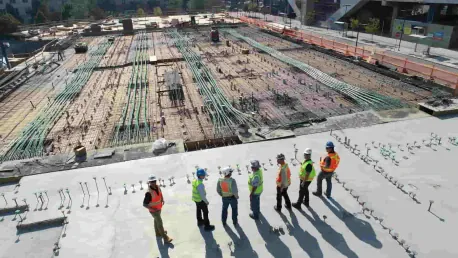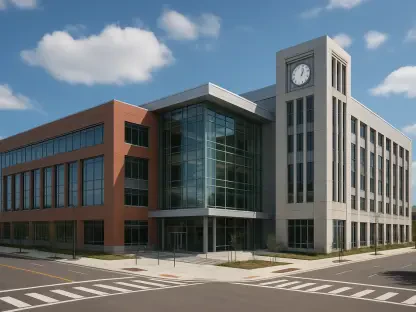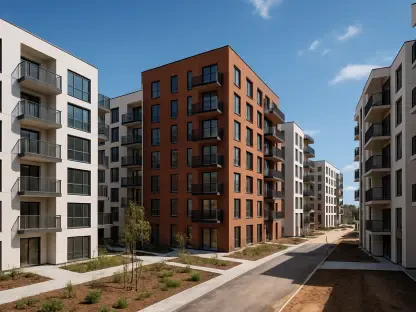Listen to the Article
The United Arab Emirates is synonymous with fast cars, high-rise buildings, and endless shopping and entertainment thrills. This region was once a desert and is now home to 9 million expats from around the world, seeking opportunities for business, lifestyle, and leisure.
In Africa, a similar story is unfolding of a continent that is coming into its own. Rapidly developing economies are becoming new world centers for digital nomads, tech industrialists, and manufacturers. With almost one quarter of the world’s population expected to reside in Africa by 2050, there’s an urgent need to develop sustainable solutions for the construction industry.
With rapid expansion, urbanization, and climate concerns, the construction industries in Africa and the Middle East are under enormous pressure to meet the demands of its population. Modular construction, first popularized in the 1970s, has gained traction as a solution to the burgeoning needs of populations and rapidly developing cities.
This article explores the role of modular construction in achieving the desired outcomes in Africa and the Middle East.
An Overview of the Modular Construction Market
Modular construction has been gaining in popularity since it was first popularized in the 1950s. In the Middle East and Africa, the industry was valued at just under $6 billion in 2024, and is projected to reach $9 billion by 2030.
The industry is bound to keep growing, especially in Africa and the Middle East, where the appetite for development is high. As nations in these regions continue to expand, either to accommodate growing populations or to remain an investment-attractive location.
Modular construction, also referred to as off-site building, is a game changer for the industry. Sites are developed in plants under controlled conditions and in accordance with the construction codes and standards. Buildings are sectioned into modules, which are developed and assembled on site.
The Demand for Modular Construction
While Africa and the Middle East are steadily growing and investing in infrastructure, the question remains: Why have they shown a clear preference for modular construction?
The answer is relatively simple; it’s cheaper, faster, and more sustainable. This satisfies the overwhelming requirements of countries that aim to quickly develop infrastructure and comply with global policies like the Paris Agreement.
Cost considerations
While there are a few exceptions, on the whole, modular construction can be a cost-effective alternative to traditional building. For simpler designs with a repetitive base, a modular approach can reduce costs by speeding up the process.
According to Falcon Structures, the statistics speak for themselves:
65% of construction professionals are able to lower their project costs using modular construction.
66% reduced timelines by speeding up the process.
77% reduced construction site waste.
Building companies, who often have multiple sites at a time, find that the principle of economies of scale applies when considering cost savings. At scale, a shorter project here can account for millions of dollars in the long run.
Sustainable Development
Developing countries will need to strongly consider the impact construction will have on the environment, while prioritizing economic growth through infrastructure and development.
In the case of the Middle East, oil-rich states are looking to attract direct foreign investment through development, while Africa contends with its burgeoning population of 2050.
Modular construction is driven by efficient processes that optimize resources and reduce the organization’s environmental footprint. Sustainable modular construction promotes the delivery of materials to the factory when required, not before, which eliminates the need for storage and minimizes emissions from transportation.
Efficient Timelines
Another drawcard for builders is that modular construction is a far more efficient process than on-site development. By designing and assembling a modular building in a factory environment, waste is reduced and material is effectively used.
Building in a factory environment also eliminates the need for storage and reduces the carbon footprint from transportation. Another advantage when using a modular approach is that inclement weather is not a factor, and this speeds up the timeline of completing a build.
With technology like Building Information Management, construction teams have access to in-depth insights that drive data-driven decision-making. Tools and design software technology are critical to enhancing the energy efficiency of buildings and speeding up the process of design and assembly.
Industry Challenges
While the benefits of adopting the modular approach are clear, it is not without its challenges. Here are some of the major issues that construction teams face:
Relevant Skill Sets
The entire process of modular construction requires teams with the right skill sets. The departure from traditional construction means that teams need to have digital literacy skills and must be able to work collaboratively.
Transport and Logistics
While transport costs are reduced on a modular construction project, the transport and logistics teams need to be well-versed in moving the prefabricated modules. They’re expensive and notoriously difficult to transport, and the coordination of delivery must be precise and timely. Conversely, in a traditional construction project, materials are sourced and delivered on an as-needed basis.
A disruption in the supply chain can have a major impact on the construction timeline and ultimately drive up the overall costs of the project. This is a major challenge for many in the industry, as supplier dependence is crucial to the success of the project,
Lack of Customization
Architects can be limited in their designs of infrastructure, as the prefabricated modules are often standardized. Despite the lack of flexibility, they need to bring client requests to life, while also navigating compliance with building codes and regulations. Obtaining permits for modular construction projects can present additional challenges and usually face additional scrutiny.
Conclusion
The rise of modular construction in Africa and the Middle East represents a transformative shift in how these regions address their growing infrastructure demands. With advantages such as cost efficiency, sustainability, and shorter timelines, modular construction is well-positioned to support rapid urbanization and meet the pressing housing and infrastructure needs of burgeoning populations.
As Africa and the Middle East continue to evolve into global economic hubs, modular construction offers a scalable, environmentally friendly, and economically viable solution to support their development goals.
However, the adoption of this innovative approach is not without its challenges. The need for skilled labor, reliable supply chains, and robust infrastructure must be addressed to unlock its full potential. Additionally, balancing standardization with customization and navigating regulatory complexities will require collaboration between governments, private sectors, and construction firms.
By overcoming these hurdles, Africa and the Middle East can harness the full benefits of modular construction, ensuring sustainable growth and positioning themselves as leaders in modern construction practices. The future of these regions is undeniably tied to innovative solutions like modular construction, which promises to shape the skylines of tomorrow.









